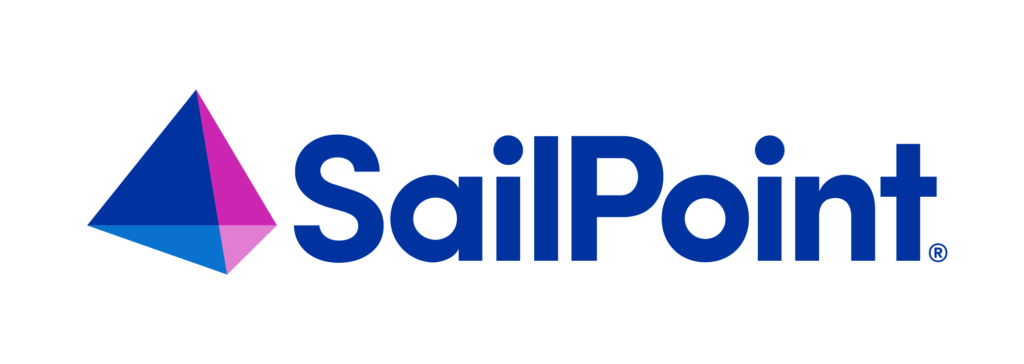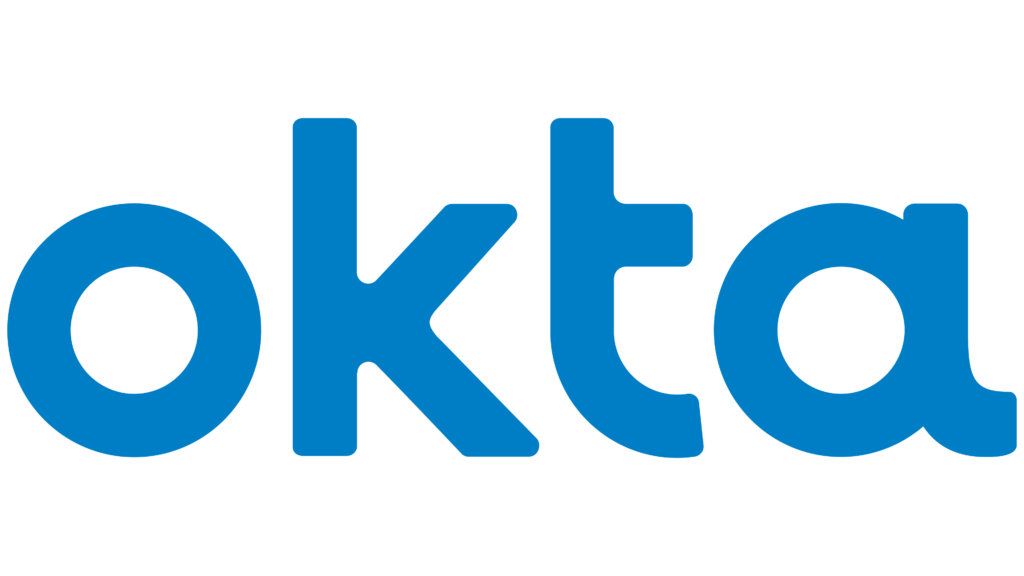IAM is the tool for any organization to ensure that its data and apps are accessible only to authorized users.
In a broader sense, Identity and Access Management (IAM) is the system that controls user access to digital assets. It ensures that the right users have the correct access and monitors all activity on data or apps through software. This prevents unauthorized access to valuable data from any source. Think of it like a digital bouncer who checks details before granting entry.

IAM helps to protect your organization’s valuable and sensitive data, strict unauthorized access from any media, and plays safeguard against any breaches

Identity Lifecycle Management is the process to interact users into a system from creating Identity to removing Identity.
Create Identity
Identity will be created on the basis of roles and policies to access data.
Update Identity
Here, each Identity will be updating user information, changing roles and policies and alter password.
Governance
Establishing and making sure that there are clear guidelines for how identities are created, who can access what, and when those identities are removed.
Deprovisioning
When any employee leaves an organization or changes roles in an organization then Identity and Access will be removed and assigned to another role with different access.
Authentication Identity is the process of checking if he is the origin user for whom identity was created.
Check Password
Passwords are required to check if it’s strong enough . Passwords need to have a combination of small case, upper case, number, special character and minimum character length.
Single Sign-On (SSO)
Users will be allowed to access different applications with a single sign-on. No need to give a password for each and every application.
Multi-Factor Authentication (MFA)
It is an extra layer of security of Identity. Even if the user has set a password, the user will be asked to attend one more to verify. Extra authentication will be done via biometric or security questions, sms, send code on email and so on. It makes sure employee is right person to give access
Authorization is the next step after authentication. In practical terms, it functions much like a digital asset bouncer. Authorization verifies the user’s authentication status, and if successful, grants limited access based on the user’s role, permissions, and policies
Auditing is to record and visibility of every digital footstep of every identity. It stands for the process of monitoring and recording activities related to user access, authentication events, changes to access control policies, and other relevant actions within an organization’s IT environment. The primary purpose of auditing in IAM is to provide visibility into user activities, detect security incidents, ensure compliance with regulatory requirements, and facilitate incident response and forensic investigations.
IAM has lots of advantages but there are also some challenges to deploy IAM.
Integrating an IAM system can be complex, only IT experts can deploy the system. Making IAM policies, rules takes careful planning and requires an executive, just to avoid misconfiguration.
For rapidly changing working environments for any organization might be difficult to scalable for daily changing numbers of devices, users and applications. Growing user populations and workloads demand highly available and performant IAM infrastructure.
Different IT systems like old software, cloud services, and external apps can be tricky to connect with your security system. You might need to write custom code or use special tools to make everything work together smoothly.
Making different security systems from different companies work together can be like fitting incompatible pieces together, especially when you have many different systems. This can be a real challenge!
IAM service providers offer varying costs per identity based on the services and features they provide. It’s crucial for organizations to evaluate IAM expenses with a focus on Return on Investment (ROI). This involves considering the benefits gained from improved security, productivity, and compliance against the associated costs.
We have listed most popular Identity & Access Management Service providers and their each key features

SailPoint is a leading provider of Identity and Access Management (IAM) solutions.SailPoint offers a cloud-native identity security platform designed to protect all types of enterprise identities, whether human or machine, throughout the modern enterprise. Discover how SailPoint’s AI-powered SaaS platform and solutions can enhance IT efficiencies, lower operational expenses, and address cybersecurity threats effectively.
Identity Governance: Through SailPoint IdentityNow, you can perform identity governance by automating user provisioning, role-based access controls, and access certification.
Cloud based IAM : IdentityNow can manage identities through the cloud. This means that identity and access can be managed from anywhere.
Reporting : IdentityNow can provide detailed information about the behavior of each identity across the organization’s digital assets.

Okta is another popular Identity & Access Management tools provider. Okta is cloud based Identity Access Management with Single Sign-on (SSO), Multi Factor Authentication (MFA), lifecycle management, and API access management
Okta’s special focus lies in simplifying and securing user experiences. With over 18,800 customers, 7,000+ integrations, and a 91% willingness to recommend, as per the 2023 Gartner® Peer Insights™.
Single Sign-On (SSO): With single sign-on, you can access all applications more securely and with improved user-friendliness.
Multi-Factor Authentication (MFA): Okta Multi-Factor Authentication (MFA) adds another layer of verification to confirm user identity, significantly enhancing security for every individual.
Universal Directory : From Universal Directory, Okta fetches all user information from different sources and helps administrators to have even more ease.
Lifecycle Management: Automatic user provisioning , deprovisioning and password resets make Identity even more secure and efficient.
ThreatInsights :Okta has visual user activity and identifies potential threats, which helps prevent security threats and misuse of data and applications.
User-Friendly Experience : Okta is known for its user-friendly interface and ease of use, making it popular among both administrators and end-users. Not only that it is even easy to deploy too.
Adaptive authentication
Adaptive authentication dynamically adjusts authentication based on risk, using factors like location, device, and behavior. This improves security and user experience.
Let’s take an example.
If you make login with your device in your office compound then Okta will be less risky and make you a simple authentication process such as asking for basic username and password. But if you try to login in a cloud from a different timezone, different location then Okta will ask for more verification . Such as sending OTP code in your mobile or asking security questions as well.
API Access Management : Okta ensures secure access to all APIs with strict safety measures and protects sensitive data.
Application Integration : Okta can integrate with other applications and directories, such as Active Directory, LDAP, Azure AD, Salesforce, Workday, Office 365, and more.
Device management : Okta is able to manage and control devices too such as computer, laptop, smartphone
Regulation : Okta can help organizations follow different rules and standards, such as GDPR and HIPAA.

Ping Identity is one of the popular secure digital gateway for online access. It offers Single Sign-On (SSO) with Multiple Factor Authentication (MFA) with an extra layer of security and is compatible with various platforms. Such as Slack, Zoom, box, Lucidchart, DocuSign, Atlassian, G Suite, Office 365 and so on. Ping Identity keeps your organization safe by letting only the right people access data or apps. Your digital secrets stay secure!
Ping Identity leads in Identity and Access Management, acknowledged for seven consecutive years in the 2023 Gartner Magic Quadrant for Access Management. Recognized for excellence in authentication, Single Sign-On (SSO), and overall access management.
Ping Identity helps protect your organization’s digital activities efficiently. It has already managed over 3 billion identities, serves 50% of the Fortune 100, and boasts a platform uptime of 99.99%.
Single Sign-On (SSO): By letting users use one login for multiple apps, it makes things easier and reduces the hassle of remembering lots of passwords.
Multi-Factor Authentication (MFA) : It boosts security by adding extra verification layers like SMS codes, fingerprints, or physical tokens, ensuring only authorized users can access sensitive information and minimizing the risk of unauthorized access.
Identity Federation : Identity Federation in Ping Identity enables users to access resources across various domains or organizations using their current authentication credentials, streamlining access and enhancing user experience.
Threat Protection : Ping Identity helps protect your environment by detecting and addressing advanced threats. It makes sure unauthorized access and suspicious activities are kept at bay.
Lifecycle Management : Ping Identity’s lifecycle management includes Ping Central for self-service identity access management with audit trails, an End of Life Policy for product support transitions, and PingFederate for efficient configuration management across diverse applications, ensuring smooth processes and adherence to support policies.
Directory service :Ping Identity’s Directory service, PingDirectory, acts as your central vault for user identities and data. It’s super secure, fast, and scales to millions of users, storing everything from login details to rich profiles.
API security : API Security by Ping Identity ensures strong protection for APIs against threats, covering login processes, access permissions, encryption, and threat detection mechanisms. It safeguards data integrity and confidentiality, reducing risks like unauthorized access and data breaches, thereby strengthening the overall security of organizations’ API ecosystems.
Audit & Compliance Reporting
Ping Identity’s Audit & Compliance Reporting keeps track of what happens in the identity system. It creates reports that show who did what and when, helping organizations follow rules and policies.

CyberArk, a leader in keeping information safe through Privileged Access Management (PAM), is growing strong. Their PAM solutions protect data for big companies and government agencies.With a careful watch on what’s happening in the tech world, CyberArk remains a key player in keeping things safe through Privileged Access Management (PAM).
Privileged Access Management
CyberArk tackles the security of important access in two ways: inside and outside. Their main Privileged Access Management (PAM) keeps important accounts and passwords safe within your organization. The Vendor Privileged Access Manager does the same but for external vendors. Both use features like Single Sign-On (SSO), Multi-Factor Authentication (MFA), and session recording to give the least amount of access needed. This helps to reduce the chances of attacks and keeps critical data safe throughout your entire digital setup.
Access Management
CyberArk’s Workforce Access keeps things super safe for both employees and customers. It uses Single Sign-On (SSO), Multi-Factor Authentication (MFA), and smart password management to make sure only the right people can get in. It doesn’t stop there – it also secures web sessions and browsing, protecting what people do online. Whether it’s inside the company or dealing with customers, CyberArk’s Workforce Access is like a superhero for cybersecurity, making sure everything stays safe and sound.
Identity Governance and Administration
Identity Governance and Administration (IGA) ensures compliance by monitoring user activities and access permissions, minimizing unauthorized access and maintaining regulatory adherence.
Lifecycle Management guides user onboarding, role changes, and offboarding, enhancing security and streamlining administrative processes for optimal access alignment.
Password Vaulting
Break free from risky password habits! CyberArk’s Password Vaulting secures privileged account passwords by centralizing and encrypting them with AES-256 protection. With least privilege access, automatic rotation, and robust audit trails, it ensures top-notch security, compliance, and visibility. Trust CyberArk to fortify your privileged access and instill confidence in your security measures!
Session Management
CyberArk’s Session Management acts as a security camera, recording user actions for quick detection of suspicious activity. It ensures compliance with detailed session logs, while also streamlining access issue troubleshooting, optimizing training, and enhancing access policies for improved efficiency.
Endpoint Privilege Management:
CyberArk’s Endpoint Privilege Management ensures secure devices such as computer & laptops use by limiting user access to essential tasks, employing just-in-time access for temporary privileges, blocking unauthorized programs, and managing remote access. This empowers users while safeguarding endpoints, enhancing overall security for geographically dispersed teams.
Cloud Security
CyberArk extends its security expertise to the cloud, offering solutions like Cloud Privilege Management for user privileges, Cloud Password Vaulting to securely store privileged account passwords, and Cloud Workload Protection Platform (CWPP) to defend against attacks on cloud workloads.
In today’s digital world, securing access to sensitive data is more critical than ever. But with so many identity management solutions on the market, choosing the right one can be overwhelming. Fear not! We will break down four key players: SailPoint, Ping Identity, CyberArk, and Okta, helping you navigate the identity management landscape.
Let’s take a closer look at each one.
First up, SailPoint. They focus on something called identity governance and administration.
SailPoint primarily focuses on identity governance and administration (IGA) solutions. Their platform helps organizations manage user access across their systems and applications securely. Key features include identity lifecycle management, access certifications, policy enforcement, and compliance reporting. SailPoint aims to provide visibility into who has access to what within an organization and ensure that access is appropriate and compliant.
Next, we have Ping Identity. They specialize in identity-as-a-service.
Ping Identity specializes in identity-as-a-service (IDaaS) solutions, providing single sign-on (SSO), multi-factor authentication (MFA), and access management capabilities. Their platform allows users to securely access applications and services across cloud, mobile, and on-premises environments. Ping Identity focuses on delivering a seamless and secure user experience while ensuring strong authentication and access controls.
Then there’s CyberArk. They’re all about privileged access management.
CyberArk is a leading provider of privileged access management (PAM) solutions. Their platform helps organizations protect and manage privileged accounts, credentials, and secrets to prevent unauthorized access and potential security breaches. CyberArk offers features such as password vaulting, session management, least privilege enforcement, and threat analytics to safeguard critical assets and infrastructure from cyber threats.
“Lastly, Okta offers a comprehensive identity and access management platform.
Okta is an identity and access management (IAM) platform that offers a wide range of solutions, including SSO, MFA, adaptive authentication, and lifecycle management. Okta’s platform enables organizations to securely connect users to their applications and devices while maintaining control and visibility over access. Okta focuses on providing a scalable and user-friendly IAM solution that enhances security and productivity for both employees and customers.
So, whether it’s SailPoint, Ping Identity, CyberArk, or Okta, there’s a solution out there to help keep your data safe and secure.
Remember, the best choice depends on your unique needs. Consider your IT complexity, privileged access requirements, cloud integration preferences, and of course, your budget.
Don’t be afraid to dig deeper, evaluate each vendor, and see their solutions in action. With the right identity management partner, you can secure your data and empower your users, all while achieving that sweet spot of efficiency and peace of mind.